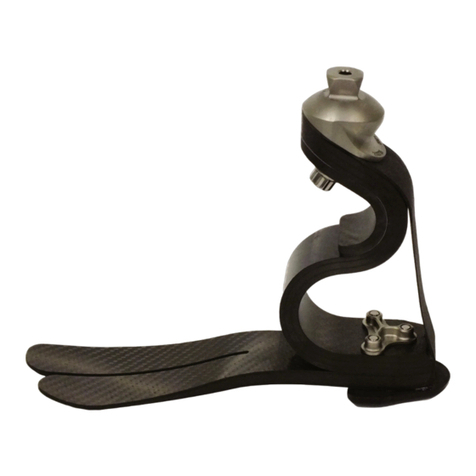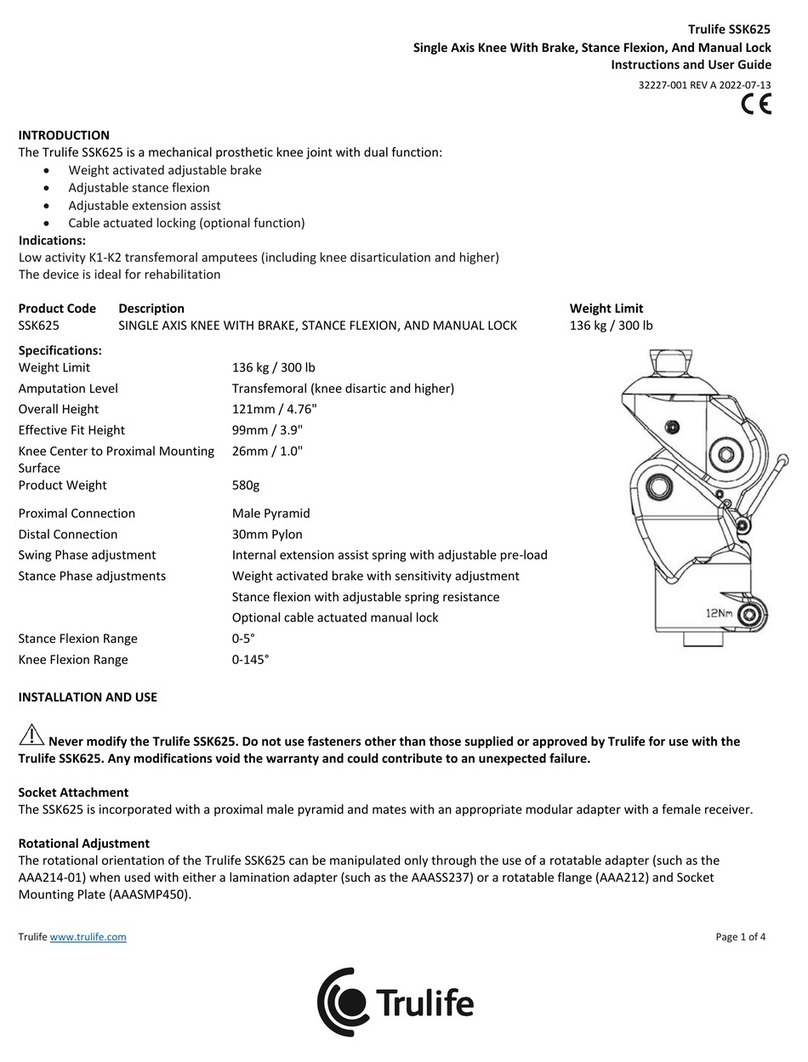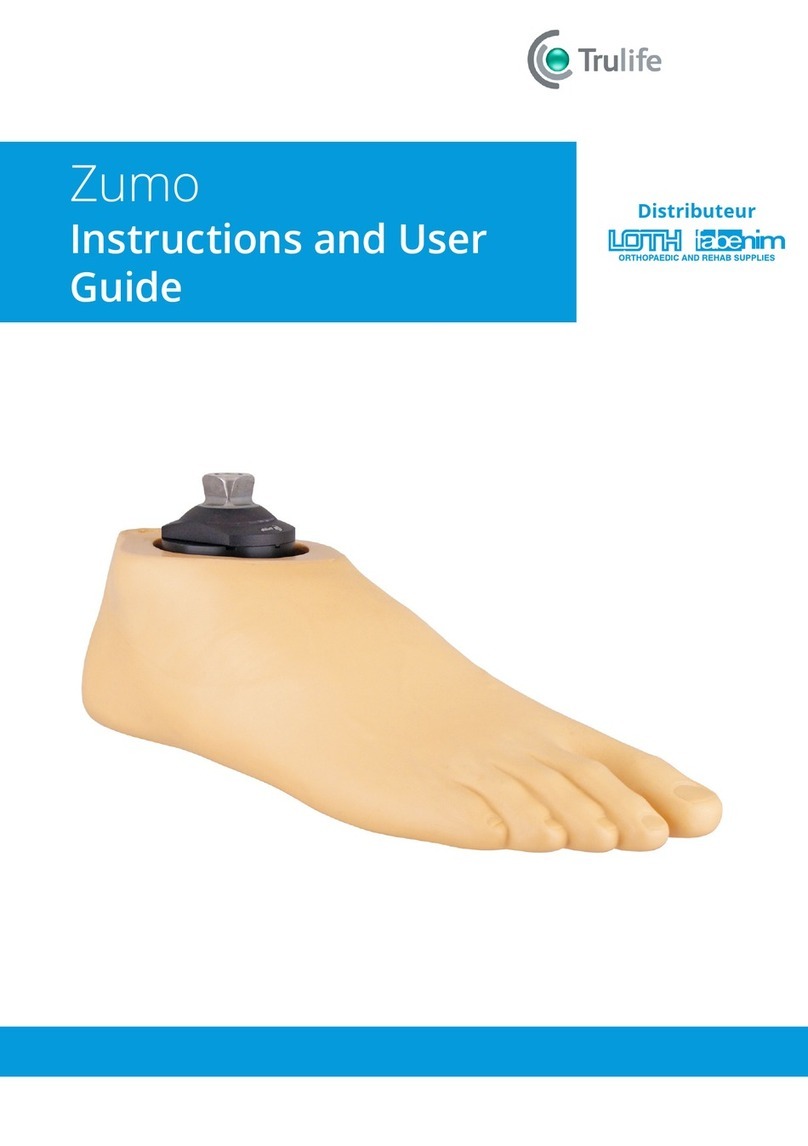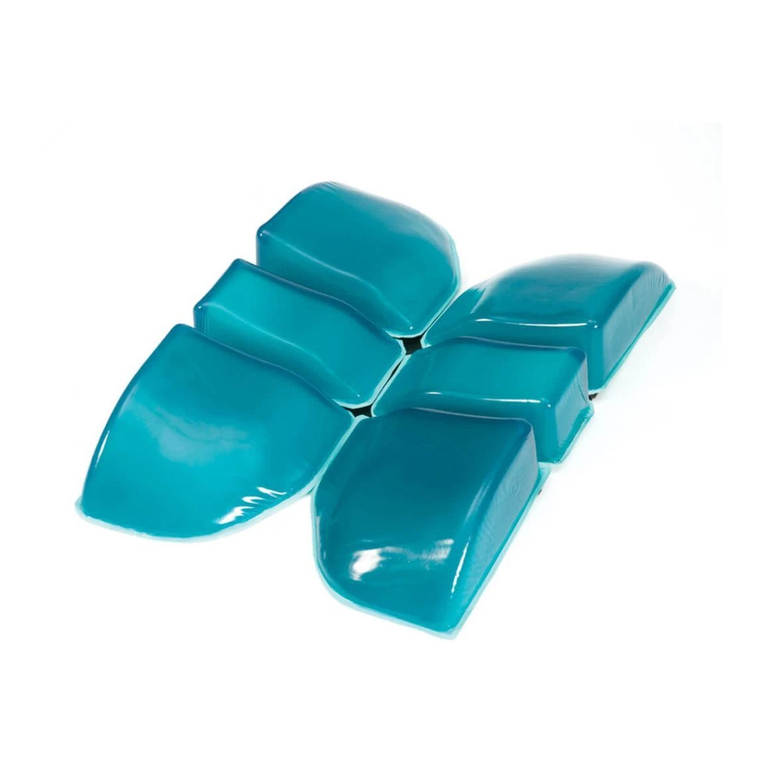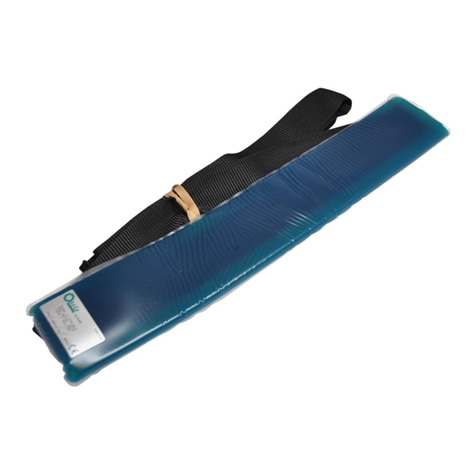
SSK610A
Child’sPlayKneewithManualLock
InstructionsandUserGuide
29151‐001REVG
Trulifewww.trulife.comPage1of3
INTRODUCTION
TheChild’sPlayKneewithManualLockisafour‐bar,polycentrickneethatutilizesamechanicallockingsystemwithamanually
operatedreleaselever.Itisalightweight,low‐profilekneethatprovidesconstantfrictionandspringextension‐assistforpediatric
amputees.TheChild’sPlayKneewithManualLockisappropriateforpediatricamputeeswithlowtohighactivitylevelsandis
compatiblewith22mmendoskeletalmodularprostheticcomponents.
ProductCode Description WeightLimit
SSK610A Child’sPlayKneewithManualLock 55kg/121lb
SSK610A‐DIS LaminationBracketforSSK610A 55kg/121lb
LIMITATIONS
TheChild’sPlayKneewithManualLock(SSK610A)requiresaclearanceof15mm(.59")fromcenterofkneetothemountingsurface.
Thekneereachesfullflexionat140°.
INSTALLATIONANDUSE
Warning:Recommendedinstallationanduseproceduresmustbefollowedformaximumsafetyandservicelife.Nevermodifythe
Child’sPlayKneewithManualLock.Failuretofollowtheinstallationanduseproceduressetforthfollowingmayleadto
structuralfailureofthecomponentssubjectingtheusertoariskofseriouspersonalinjury.
Warning:Donotexposekneetowater.Ifthekneecomesincontactwithwater,theextensionassistcontrolshouldbethoroughly
evaluatedforfunctionality.
SocketAttachment
SSK610Acomespreassembledwithapyramid(SSK610A‐PYR).Theattachmentscrewshouldbetightenedto66Nm(48.7ft‐lbs)
usingan8mmhexdriver.Uselow‐strengththreadretainingcompoundsuchasLoctite242orsimilar(thisistopreventgallingor
seizingofthethreadswhentheboltistightened).ArotatableKneeDisarticulationMountingBracket,(SSK610A‐DISLaminating
BracketforSSK610A),isalsoavailableandisdesignedtobelaminatedintoplaceasfollows:
1. Roughenthemountingareaofthesocketsurfacewithsandpapertoensureadhesionofthelamination.
2. Markthepositionofthebracketintheappropriatealignmentonthelaminatedsocket.
3. Bendthemetalmountingbrackettocloselymatchthecontourofthesocketinthedesiredpositionwhilemaintainingcorrect
alignment.Removeanybendingironimpressionsfromthesurfaceofthemetalbracket.
4. Removethemountingbracketfromthekneebylooseningtheattachmentscrewlocateddistallyonthebracketwithan8mm
hexkey.Removetheattachmentscrewandsetitasideuntilthekneeistobere‐assembled.
5. Preparethemountingbracketforlamination.Useclaytoprotecttheattachmentsurfaceandscrewholesfromfillingwith
laminate.BondKembloorPeliteovertheattachmentsurfaceandscrewholetofurtherpreventresinintrusion.
6. Temporarilysecurethemountingbracketintoplacewithmethylmethacrylateorepoxy.Ifnecessary,themountingbracketcan
berivetedintoplacethroughthefourmountingholesforadditionalstrength.
Caution:Testwalkingonanunreinforcedmountingbracketaftertemporarilysecuringitinplacemaycausefailure.
7. Securethemountingbrackettothesocketusingseverallayersoffiberglasscastingtapeasatemporaryreinforcement.When
satisfactoryalignmenthasbeenachieved,removethefiberglasscastingtapebeforeapplicationofthedefinitivelamination.
8. Laminatethemountingbrackettothesocketsurfaceusinganappropriatelystronglayupfortheindividualpatient.
9. Trimthehardenedlaminationtoexposethedistalmountingsurfaceforthescrewhole.Donotcutornickthemountingbracket
whentrimmingthelaminateawayfromthedistalsurfaces.
10. Reinstallthekneeunitintothemountingbracketsothatthelabelisanteriorfacing.
11. Usetheattachmentscrew,previouslysetaside,toattachthemountingbrackettothekneeunit.Useatorquewrenchwithan
8mmhexdrivertotightentheattachmentscrewto66Nm(48.7ft‐lbs).Uselow‐strengththreadretainingcompoundsuchas
Loctite242orsimilar.
Note:
•Theapplicationofthethreadretainingcompoundistopreventgallingorseizingofthethreadswhentheboltistightened,
andtoensurepropertorquevalueisachieved.




